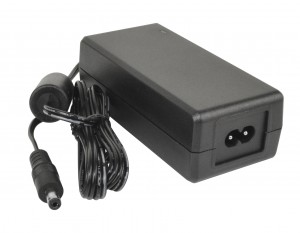While the harmonization of energy efficiency standards is an obvious goal that benefits international trade, the existence of various regulatory bodies around the globe continues to make this a game of leapfrog. Currently, in the sphere of external power supply efficiency, Europe leads the world with the most stringent legislation that implements the Level V Marking Protocol. However from February 10, 2016 the baton will pass to the USA whose Department of Energy will then require all domestically manufactured or imported external power supplies to meet the new Level VI Efficiency Standard.
Consequently it is imperative that any manufacturer of equipment that relies on external power supplies, and whose product might be destined for the US market, is aware of these regulatory changes in time to ensure compliance without disruption to its supply chain. This may seem obvious but it’s not necessarily the reality of the situation, as we’ll see from the case study below of a European manufacturer whose products end up with American customers through a variety of sales channels.
What’s Different in Level VI?
This is the immediate question a European manufacturer, aware of EU Phase 2 efficiency standards for external power supplies and the Level VI Marking Protocol, needs to understand. Superficially it might seem that an equipment maker who just bundles an external power supply with its end‑product simply needs to procure a Level VI compliant power adapter to ship to its US customers after February 10, 2016.
Of course, life’s never that simple! The scope of the new regulations is broader and the specifications are more complex than the previous Level IV and Level V requirements. For example, multi-output power supplies and supplies rated at over 250W are now included, meaning the legislation will embrace more applications than before and extend into areas not typically thought of as portable equipment, such as lighting installations that use external power supplies.
Other, less obvious, implications arise from the tighter efficiency limits and the way that Level VI now segments the different classes of external supply, with separate specifications for AC/DC and AC/AC, and distinguishes between low-voltage types that output less than 6V and basic-voltage types with outputs greater than 6V. For the system vendor this may force a different choice of adapter to kit with its equipment, which if nothing else may have different mechanical dimensions to the previous unit even if the essential electrical parameters (voltage and current ratings) remain unchanged. In many instances simply re-engineering power supply designs to meet the tighter efficiency specifications is likely to result in a larger form factor.
Case Study: ASH Technologies
ASH Technologies is an Irish company located in County Kildare, just south of Dublin, that has been designing, manufacturing and supplying low-vision aids for over 20 years. Its product line includes handheld, portable and desktop magnifiers serving the needs of people with visual impairments. These help with close proximity tasks such as reading, writing and similar activities although devices with integrated cameras can also help with distance vision challenges, for viewing live events or simply watching TV. More recently ASH has applied its technology to industrial applications with digital imaging solutions for product inspection in quality assurance and failure analysis. These include both handheld and desktop digital microscopes, with 90% of its production being exported through distributors to global markets, including the USA.

Figure 1. ASH Technologies’ Inspex 1080p inspection system uses an external power supply
As many of ASH’s products, especially the desktop units, either require or can be used with external power supplies it is clear the company needs to offer Level VI compliant adapters if it is to continue serving the US market. And it probably makes sense to bundle the same compliant adapter regardless of where the product is shipping to minimize stock-keeping issues and the risk of a non-compliant kit ending up in the wrong place.
However it wasn’t until early-September this year (2015) that ASH became aware of the impending Level VI regulations. As ASH’s Design Engineer, Brian Heffernan, explained, “It was only when a CUI sales representative paid us a visit that we first heard about Level VI. The immediate concern this raised was what we needed to do to ensure continuity of supply to our customers, knowing that aside from how long it might take us to qualify new adapters our normal procurement lead-time is 12 weeks.”
What was also of concern to ASH was subsequently learning that its incumbent suppliers were both aware of Level VI yet seemingly had neglected to inform ASH about the changing legislation and how it might affect them. Indeed those suppliers showed no sense of urgency in terms of developing compliant adapters – their respective sales people both assuming they would have product in time.
Needless to say, ASH has not been so complacent. It has worked closely with CUI to identify suitable Level VI compliant replacements for the 50 W desktop and 18 W multi-blade wall plug adapters that it ships with its digital microscope products. ASH currently has samples of these new units being tested in its laboratories. As its R&D director, Martin Cahill, told us, “We have satisfied ourselves that these units meet all our normal performance requirements and are comfortable we have a solution with CUI. We still have EMC testing to conduct and ASH also needs to complete self-certification for safety, load testing and regulation but none of these requirements should be an issue. Then we will be in a good position to seamlessly transition to Level VI compliant kits without any disruption to supply.”

Figure 2. CUI’s Level VI compliant 50 W Desktop and 18 W Multi-blade Wall Plug Adapters
Conclusion
There are various “takeaways” from this story. First is the concern that the message about the upcoming legislation relating to changes to the energy efficiency regulations for external power supplies isn’t reaching the systems companies who are buying in adapters to accompany their equipment. Secondly it’s evident that some manufacturers of such power supplies seem to have a rather laid-back attitude towards the timeline dictated by the new standards. But on the plus side CUI at least has been championing the cause for some while now, having begun introducing Level VI compliant adapters since late 2014. So, the final message is, “Don’t be complacent, act now and don’t be caught out by the new rules.”







